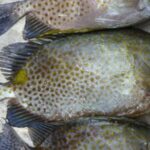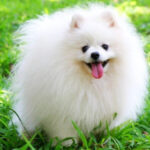The Labrador Retriever is a beloved breed known for their patience, friendliness towards children, and excellent sense of smell. These traits, along with their intelligent expression and trainability, make them ideal for search and rescue, as well as security purposes. Let’s delve into the fascinating world of Labrador Retrievers.
1 Origin of the Labrador Retriever
The Labrador Retriever’s ancestors can be traced back to the Greater Newfoundland, originating from Canada. Historically, they were used for scenting and retrieving game during hunting expeditions.
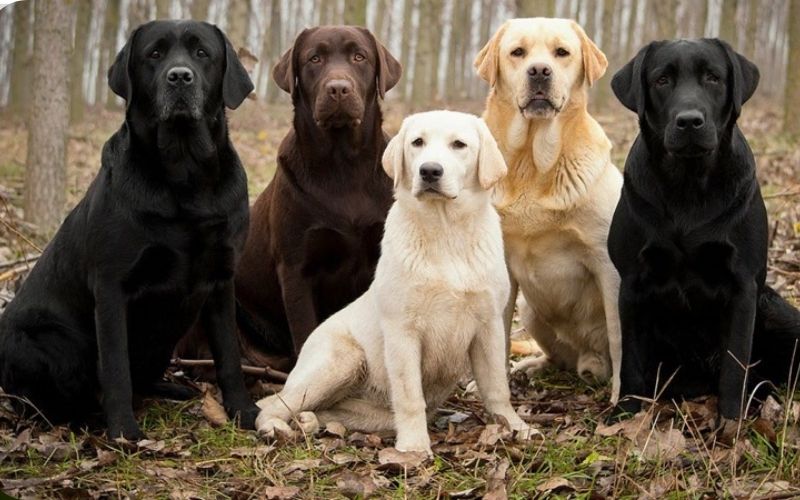 The Labrador Retriever’s ancestors can be traced back to the Greater Newfoundland, originating from Canada.
The Labrador Retriever’s ancestors can be traced back to the Greater Newfoundland, originating from Canada.
Throughout the 18th and 19th centuries, Labradors were favored by fishermen for their ability to assist in hauling nets, diving into cold waters to herd fish, and even retrieving nets. By the 1920s and 1930s, they had quickly become a popular pet choice in the United States, and today, they are the most commonly owned dog breed in American households.
2 Characteristics of the Labrador Retriever
Physical Traits
With their medium size and well-proportioned, sturdy build, Labrador Retrievers exhibit the agility of a hunting dog. They are distinguished by their short, dense, and straight coats, which possess water-resistant properties, enhancing their swimming abilities.
 Labrador Retrievers have a medium size and well-proportioned, sturdy build.
Labrador Retrievers have a medium size and well-proportioned, sturdy build.
Additionally, they have a soft and thick undercoat that provides insulation and protects against insects. The coat can be black, yellow, or chocolate in color. Their eyes are usually hazel or light brown with black rims. The front legs are straight, while the hind legs exhibit a slight curve at the knee, with well-developed thighs. Their tail extends in a straight line from the body, reaching the hock.
Adult Labrador Retrievers typically stand at a height of 52-60cm, with males weighing between 27-32kg and females between 25-30kg.
Personality Traits
Labrador Retrievers are renowned for their sweet, friendly disposition towards humans and other animals, making them ideal companion animals. As sporting dogs, they thrive on activities such as running, jumping, and exercising. They have a particular affinity for water and swimming, and can be trained for work-related tasks.
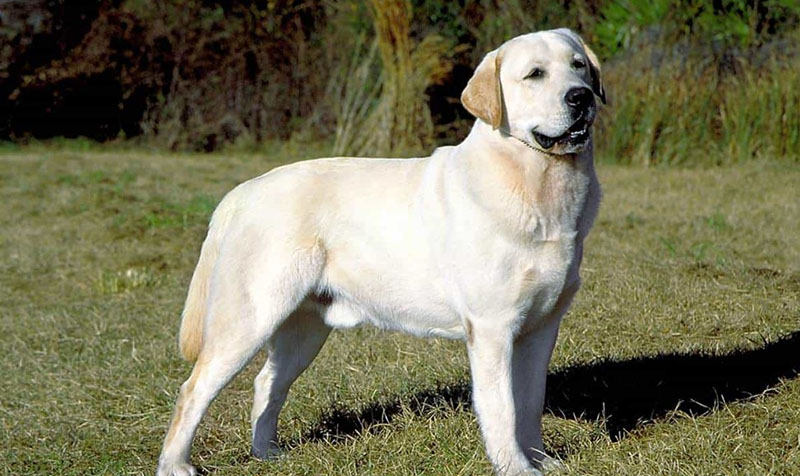 Labrador Retrievers are known for their sweet and friendly nature.
Labrador Retrievers are known for their sweet and friendly nature.
An interesting fact about Labradors is their love for food, which can sometimes lead to overeating and weight issues if not properly managed.
3 Caring for Your Labrador Retriever
Diet
While Labrador Retrievers are generally easy eaters, it’s important to ensure their diet includes adequate protein, fat, calcium, vitamins, and minerals for holistic health and development. Maintain regular feeding times and always provide clean utensils. Keep fresh water available at all times, changing it at least three times a day. Avoid feeding your dog spoiled food, excessive rice, fatty meats, starches, and refined carbohydrates to prevent digestive issues.
 A healthy diet is essential for your Labrador Retriever’s well-being.
A healthy diet is essential for your Labrador Retriever’s well-being.
Note that as your dog reaches six months of age and beyond, their dietary needs will increase, and you should incorporate a variety of foods such as meat, eggs, vegetables, and bones. For adult dogs, raw meaty bones and large chunks of meat can help strengthen their teeth.
Grooming
Regular exercise, including walks and engaging in playful activities such as swimming, fetch, and frisbee, is essential for your Labrador Retriever’s physical well-being.
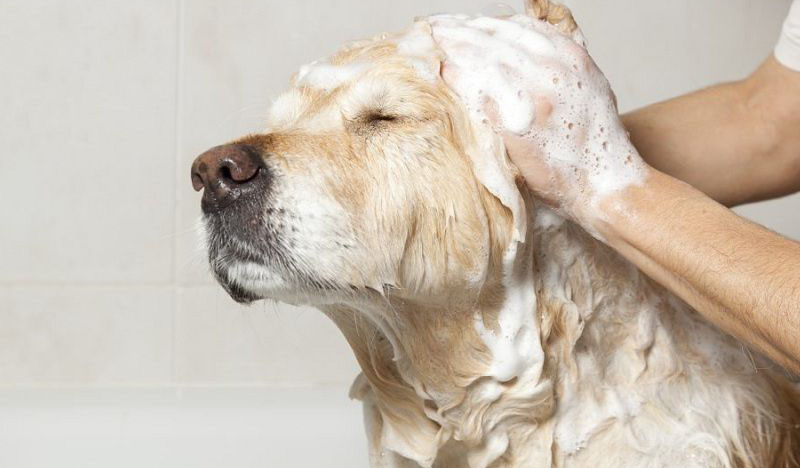 Provide your Labrador Retriever with a comfortable living space that is well-ventilated, clean, and dry.
Provide your Labrador Retriever with a comfortable living space that is well-ventilated, clean, and dry.
Ensure they have access to a comfortable living space that is well-ventilated, clean, and dry. While grooming, it is recommended to bathe your Labrador Retriever once a week using specialized shampoos to minimize shedding and maintain coat health. Brushing their coat once a week is also advisable.
Health Concerns
Elbow Dysplasia: This condition is common in larger Labrador Retrievers and occurs when the three bones that form the elbow joint develop at uneven rates, leading to joint looseness, pain, and potential lameness.
Hip Dysplasia: A hereditary condition where the thighbone does not fit snugly into the hip joint, causing pain and a wobbly gait in one or both hind legs.
Cataracts: Similar to humans, dogs can develop cloudy spots on their eye lenses, which may grow over time and potentially lead to vision loss.
 Labrador Retrievers may face various health concerns, and regular veterinary check-ups are essential.
Labrador Retrievers may face various health concerns, and regular veterinary check-ups are essential.
Osteochondrosis Dissecans (OCD): This condition affects the development of cartilage within the joints, commonly seen in the elbow and shoulder joints. It causes joint stiffness and pain during movement.
Epilepsy: Seizures can range from mild to severe, causing your dog to run frantically, stumble, or exhibit fearful behavior.
Ear Infections: Due to their large ears, Labrador Retrievers are prone to ear infections if not properly cared for. Regular cleaning and inspections are crucial to prevent infections.
Training
Despite their naturally gentle and obedient nature, Labrador Retrievers require consistent training from an early age to ensure they are well-behaved and responsive to basic commands. It is essential to socialize them with children and other animals to foster a friendly and adaptable temperament.
 Training your Labrador Retriever from a young age is crucial for their development and behavior.
Training your Labrador Retriever from a young age is crucial for their development and behavior.
4 Price of a Labrador Retriever
 The price of a Labrador Retriever can vary depending on various factors.
The price of a Labrador Retriever can vary depending on various factors.
Price of a Labrador Retriever without VKA Papers
Labrador Retrievers without VKA papers are typically bred by families or enthusiasts, and their price ranges from 6 to 12 million VND per puppy. The cost can vary depending on the coat color:
- Chocolate Labrador Retriever: Approximately 6 million VND per puppy
- Yellow Labrador Retriever: Approximately 6 million VND per puppy
- Black Labrador Retriever: Approximately 5.5 million VND per puppy
Price of a Labrador Retriever with VKA Papers
Labrador Retrievers with VKA papers, which certify their purebred status and provide a detailed lineage, are priced higher, ranging from 9 to 12 million VND per puppy. This is approximately 3 to 4 million VND more than those without VKA papers.
For imported Labrador Retrievers:
- Price of a Labrador Retriever imported from Thailand: 10 to 15 million VND per puppy
- Price of a Labrador Retriever imported from the USA: Approximately 35 million VND
VKA, or the Vietnam Kennel Association, is the official body that certifies the pedigree of purebred dogs in Vietnam. VKA papers provide a detailed lineage of the dog’s ancestors and are a guarantee of the dog’s purebred status.
5 Frequently Asked Questions about Labrador Retrievers
Are Labrador Retrievers Aggressive?
Labrador Retrievers are known for their gentle, sweet, and intelligent nature, making them excellent working dogs and companions. Their loyal and obedient personality makes them well-suited for families with children or other pets.
 Labrador Retrievers are known for their gentle and sweet disposition.
Labrador Retrievers are known for their gentle and sweet disposition.
Can Labrador Retrievers Guard Houses?
While Labrador Retrievers can alert you to strange smells or sounds, their playful nature makes them easily distractible, and they may not be the best choice for guard dogs.
Labrador Retrievers make loyal and loving companions, and we hope this guide has provided you with valuable insights into this wonderful breed. Why not consider welcoming a furry friend into your life?
The Magic of Black-Eyed Susan Vines: Unveiling the Secrets of this Captivating Climber
Morning Glory is a captivating and vibrant climbing plant that has captured the hearts of many. Its stunning beauty has intrigued you for a while, and now it’s time to delve deeper and uncover the secrets of this enchanting vine. Join us as we explore the unique characteristics, symbolism, and the art of cultivating and nurturing this mesmerizing Morning Glory.
The Magic of Castor Beans: Unveiling the Secrets of This Extraordinary Plant and Its Cultivation
“Chinese Forget-me-Nots, or Cynoglossum amabile, are beautiful and easy-to-grow flowers that will add a touch of charm to any garden. But do you know the hidden meaning behind these pretty blooms, and the secrets to growing them to perfection? Uncover the answers in the article below and discover the true potential of these captivating flowers.”
characteristics-and-pricing/’ title=’The Pomeranian: Origins, Characteristics, and Pricing’>The Pomeranian: Origins, Characteristics, and Pricing
The Pomeranian, or ‘Pom’, is an adorable and popular dog breed that has captured the hearts of many. With their fluffy coats and playful nature, it’s no wonder that these little dogs have become a favorite among pet owners. If you’re thinking of welcoming a Pomeranian into your family, join us as we explore the fascinating world of these tiny, loveable companions and uncover everything there is to know about this delightful breed!


